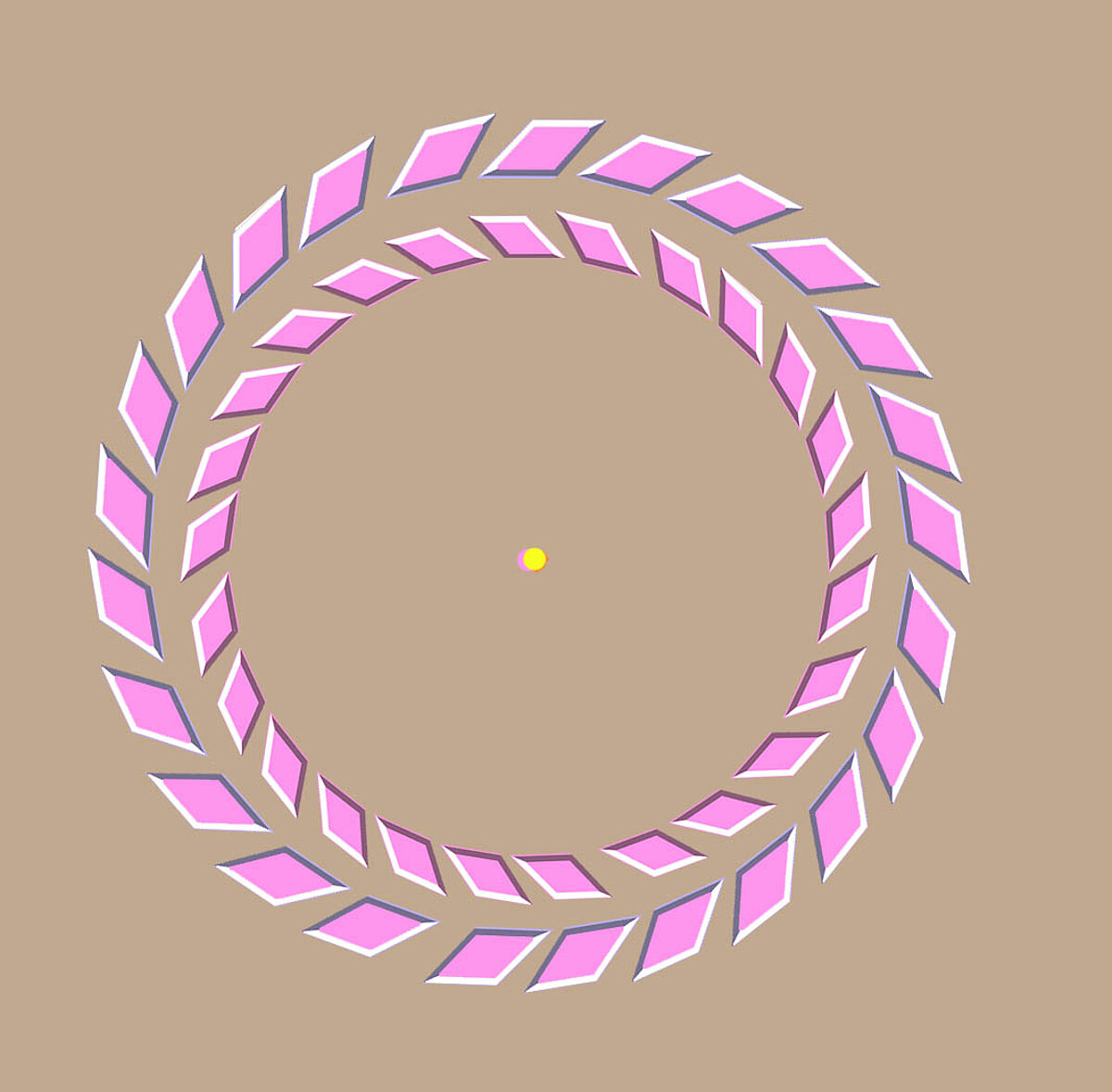
„From Kandinsky's paintings to the Watercolour illusion: A new theory of colour filling-in”
Kim?, Maskavas street 12/1, 25.02.2010, 19.00 “What is a visual meaning? From the perceptual organization to the visual language”
Stockholm School of Economics in Riga, 26.02.2010, 13.00
Application form
Invitation
Abstracts of the lectures: From Kandinsky's paintings to the Watercolour illusion: A new theory of colour filling-in. The watercolour illusion (WCI) is a long-range assimilative spread of colour (filling-in) emanating from a thin coloured line running contiguous to a darker chromatic contour. Kandinsky's paintings show examples of filling-in related to the WCI. Filling-in reveals the dissociation between the retinal input and the percept, and raises fundamental questions about brain activities. Here, I describe experiments, based on the WCI and Kandinsky's insights, by examining the psychophysical conditions, the main laws and possible neural mechanisms associated with this remarkable phenomenon. What is a visual meaning? From the perceptual organization to the visual language The main purpose of this work is to introduce three kinds of perceptual organization called “form of grouping”, “form of shape” and “form of meaning”. The main purposes of this work are: (i) to suggest a link between perceptual grouping, shape perception and visual meaning, (ii) to trace the visual shapes and meanings back to organizational processes similar to grouping, thus following the same phenomenological and epistemological basis inspired by Gestalt psychologists but, at the same time, going beyond the principles studied by them, (iii) to define the phenomenal underlying structure and principles ruling the formation of shapes and meanings, and, finally (iv) to delineate a new theory of perceptual organization based on this interrelated tripartition of forms. This perspective can widen the domain of Vision Science and by including perceptual meanings usually considered parts of the Cognitive Science bridge between the two domains of investigation.
About the speaker: Baingio Pinna is a Full Professor of Psychology at the University of Sassari, Italy. He is one of the leading experimental researchers working on visual perception and visual illusions in particular. Prof. Pinna has formulated several illusions and several principles of perceptual organization of visual field (e.g., Pinna illusions and Watercolor Effects). He is winner of several awards and he has been lecturing at Harvard, Sorbonne, and Boston Universities to mention just a few. He is the editor of Spatial Vision and Seeing and Perceiving. Prof. Pinna has published 4 books and more than 150 peer-reviewed publications.
Kim?, Maskavas street 12/1, 25.02.2010, 19.00 “What is a visual meaning? From the perceptual organization to the visual language”
Stockholm School of Economics in Riga, 26.02.2010, 13.00
Application form
Invitation
Abstracts of the lectures: From Kandinsky's paintings to the Watercolour illusion: A new theory of colour filling-in. The watercolour illusion (WCI) is a long-range assimilative spread of colour (filling-in) emanating from a thin coloured line running contiguous to a darker chromatic contour. Kandinsky's paintings show examples of filling-in related to the WCI. Filling-in reveals the dissociation between the retinal input and the percept, and raises fundamental questions about brain activities. Here, I describe experiments, based on the WCI and Kandinsky's insights, by examining the psychophysical conditions, the main laws and possible neural mechanisms associated with this remarkable phenomenon. What is a visual meaning? From the perceptual organization to the visual language The main purpose of this work is to introduce three kinds of perceptual organization called “form of grouping”, “form of shape” and “form of meaning”. The main purposes of this work are: (i) to suggest a link between perceptual grouping, shape perception and visual meaning, (ii) to trace the visual shapes and meanings back to organizational processes similar to grouping, thus following the same phenomenological and epistemological basis inspired by Gestalt psychologists but, at the same time, going beyond the principles studied by them, (iii) to define the phenomenal underlying structure and principles ruling the formation of shapes and meanings, and, finally (iv) to delineate a new theory of perceptual organization based on this interrelated tripartition of forms. This perspective can widen the domain of Vision Science and by including perceptual meanings usually considered parts of the Cognitive Science bridge between the two domains of investigation.
About the speaker: Baingio Pinna is a Full Professor of Psychology at the University of Sassari, Italy. He is one of the leading experimental researchers working on visual perception and visual illusions in particular. Prof. Pinna has formulated several illusions and several principles of perceptual organization of visual field (e.g., Pinna illusions and Watercolor Effects). He is winner of several awards and he has been lecturing at Harvard, Sorbonne, and Boston Universities to mention just a few. He is the editor of Spatial Vision and Seeing and Perceiving. Prof. Pinna has published 4 books and more than 150 peer-reviewed publications.

 CONFERENCE
CONFERENCE